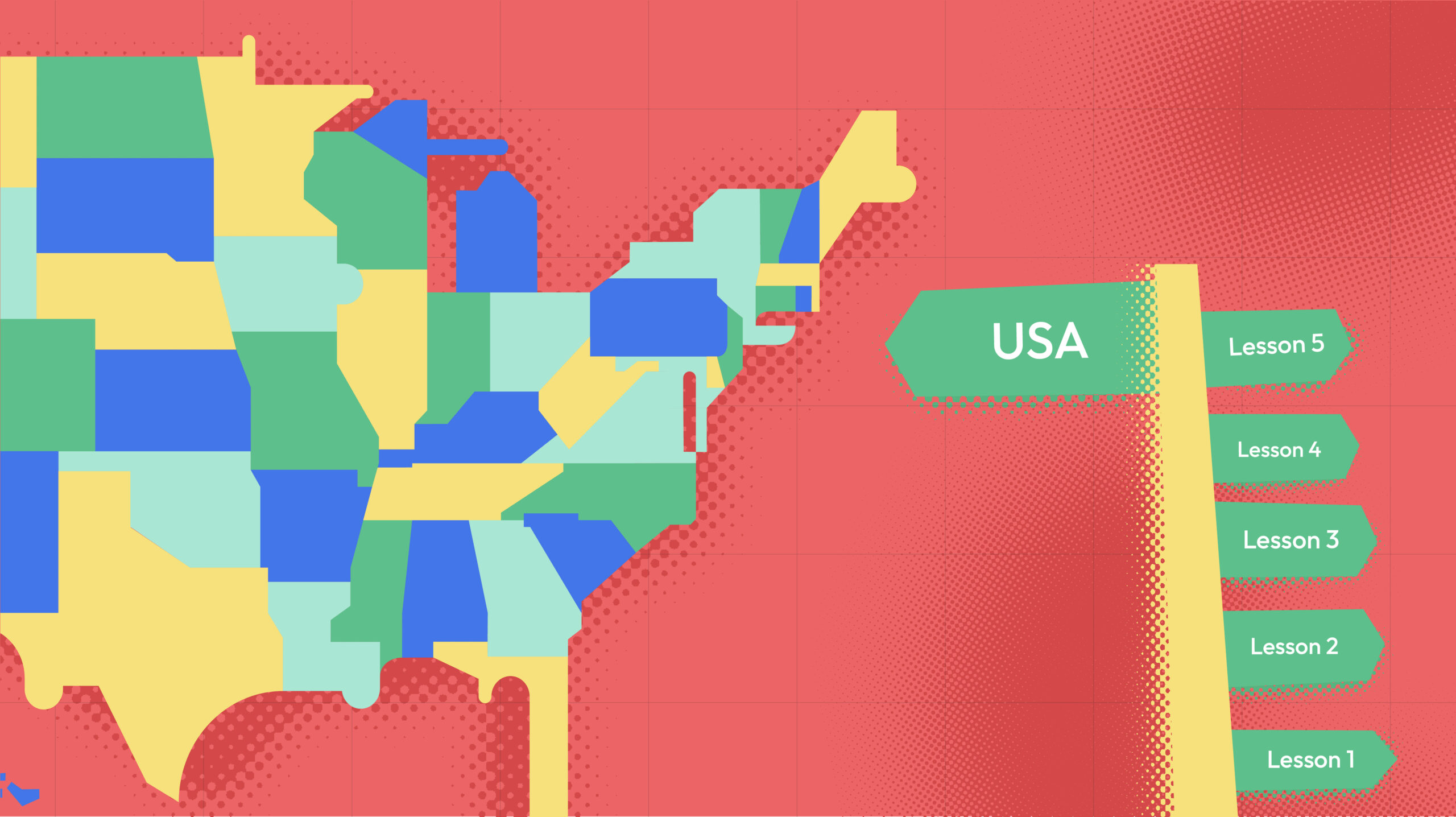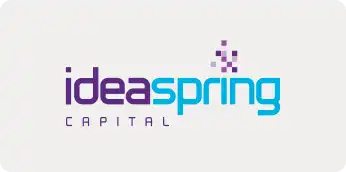Cracking the US market has been a top priority for many SaaS founders as they think of building a substantially large company. The reason is that the total addressable market (TAM) the US offers is unmatched. Several companies have found success there. While Innovaccer, Freshworks, and Zenoti have made a lot of progress, others, such as Acceldata, Rattle, and Yellow.ai, are in the early stages of navigating the US market.
At Lightspeed, over the past decade and more recently, we’ve been decoding and studying companies that have made this transition successfully. We have managed to create a playbook that helps our portfolio founders launch and scale faster than their competitors. This has helped us draw patterns of where founders commonly get stuck or find themselves at crossroads. Making the wrong choice or decision at these stages means these founders lose time, money, and ground to their competitors.
Founders need to plan wins by making incremental gains so the team is better equipped to take on challenges in any circumstance. It covers everything—who to hire, how to execute, and where to get talent from. And that’s why we decided to write this. For you to learn from the journeys of those who have gone down this path before.
Lesson 1: Are you ready for the move?
There is no one answer or a “magic moment” to when founders should consider business relocation. The journey to the US is different for different founders and businesses. It is tempting to think there are parameters such as annual recurring revenue (ARR) or a proof-of-concept (PoC) in your initial market that need to reach a certain level before moving to the US.
But in our experience of working with founders, the first big understanding they need to have when deciding to move to the US market is taking things as if they were setting up an entirely new company. Whether they are at $10 million annual recurring revenue (ARR) in India or just figuring out their go-to-market motion in their existing market(s), going to the US means starting your zero-to-one journey afresh. It is the only way to approach the move.
There are, of course, varied examples of how founders have done this differently. Pepper Content and Yellow.ai, for example, built their products in India first and moved to the US after completing their India PoC. Hubilo, on the other hand, built for India and the US simultaneously, because it was operating in a product space that was new for the global market, while Rattle built for the US market from day zero.
Founders who have successfully made the move to the US have been able to do so because they understood the needs of the market, the customers, and the competition. They were able to answer the why now question upfront. The US is traditionally a more mature market than Asia, so you need to prepare your product to compete more effectively there.
There is a learning curve when founders move to the US and it’s important to understand how to decode the market.
Lesson 2: Revalidate your core market and customers
Now that you’ve decided to go to the US, you need to figure out the next steps for business relocation. What’s next in the action plan? It has to be to understand your market and customer.
Founders often try to figure it all out on their own. It is not an ill-founded approach because, after all, they figured out their zero-to-one journey successfully in India. But once you are in the US, you need to ask yourself all the questions you may have already answered in India. How do you revalidate your PMF? Is your use case relevant in this market? Are the workflows similar?
But before you answer any of these, you need to figure out how to get access to customers.
“Research firms can help you answer questions such as who is your customer, and who is the decision maker in the customer ecosystem that you are targeting. They will also decode the tech being purchased in the US and help identify your potential customers based in the US.”
How do you get to the market and understand it better? It is through direct as well as extended networks.
Without having a brand or presence in the US, your investors are the first touchpoint to get you started on making connections. Building an advisory non-executive board is a good way in. There are three archetypes of advisors you could bring on board:
- GTM or network builder – These are door openers. They will also help you in hiring your GTM team
- Product iterator – They are far more technical and will be your product & tech advisors
- Narrative builder – One who will help you identify the gaps that exist in the market, what should your product be solving for, how to pitch it to potential customers, customer segmentation
How do you get to these folks? We have been able to leverage the Lightspeed community in the US to help our founders get access to such folks.
Executive search partners who specialise in board advisory practice are also helpful to find the right advisors for businesses. The challenge is choosing the wrong partner. Make sure you have done your due diligence on whether the partner understands your space and has deep rooted connections with the CXO community. Advisors can be an important part of your arsenal when it comes to approaching new customers or even understanding the US markets.
The fastest way to learn is to look at the way others did it and understand by drawing parallels that will help you get started. Most founders are welcoming and the India community in the US is strong. The Funda Community supported by Lightspeed in India and the US is one such place where Indian founders have access to others in the community, investors and executives. Founders have also grown their network via events, conferences, cold DMs on Twitter or LinkedIn, or warm introductions through investors or advisors.
Lesson 3: Founder moves first
Fly out to the US. There is no other way of saying this. Founders need to be in the US in person meeting customers. Because it’s the zero to one all over again, you are the best person to talk about your product.
We have often seen founders try to crack open the US market by hiring a vice president of sales and a couple of account executives (AEs) that she/he helps hire. They then let them do the initial selling on the back of what has already been sold in India. Unfortunately, as we’ve said before, it almost never works.
The competitive landscape in the US may be very different and you need to hear it first hand from potential customers on why they are or are not selecting your product. So it is imperative for founders to make the move if they want to grow their business in the US.
“Once you are in the US, you need to ask yourself all the questions you may have already answered in India. How do you revalidate your PMF? Is your use case relevant in this market? Are the workflows similar?”
The founders of some of our portfolio companies such as Rattle, Yellow.ai, and Acceldata physically moved to the US to accelerate the journey. They had to be in the market, understand how customers think, and be available. When you move to the US, it is not just about selling; you need to believe that you are starting up all over again. This includes perfecting your PMF once again.
Originally, the US was focussed on one city in California, but things have changed. Tech companies have migrated to other cities, be it Austin, Texas, or Boston, Massachusetts.
You need to identify two things:
- Who are you selling to?
- Where is the largest concentration of your customers?
The answers to both these questions will help you decide where to set up a base in the US. For instance, for a company such as devtools-based Hasura, it makes practical sense to be in San Francisco, close to their customers and the larger developer community.
In order to figure out your launch strategy based on where your customer persona is based, you can work with research firms such as Gartner. They can help you answer questions such as who is your customer, and who is the decision maker in the customer ecosystem that you are targeting. Research firms will also decode the tech being purchased in the US and help identify your potential customers based in the US. These are invaluable insights that can double up as your product advisor.
Lesson 4: Don’t be afraid to lean on a hiring agency
Now that you’re in the US, you need to make a smart hire. But getting that person in the door is restricted by your network. Your investors, advisors, or alumni network may put you in touch with interesting people, but unless you meet a large pool of potential hires, you will not be able to make an informed decision.
Founders often find themselves unwilling to engage a hiring agency because Indian agency experiences aren’t always the most productive. However, the agency route can be extremely helpful in the US if you are looking for skilled talent in niche areas. A good example of this is how one of our portfolio firms, GlobalFair, found just the right fit early in its US journey. The company is a building materials marketplace, an area that is highly specialised and one where knowing talent in the US was a long shot even for us.
So what did we do to help them? Given our experience, we nudged Shaily Garg, the founder, to move to the US and she became the first salesperson there, going on-ground and meeting customers. While customers were clearly impressed with the company’s value proposition, she realised she needed a team to take the product to more customers, as well as to the larger market faster.
That’s when we introduced them to an executive search firm who were deep in the area and helped them bridge the talent depth gap in the US. It helped GlobalFair hire its first sales executive in the US, who opened the market wide open for them and now we are in the last stages of onboarding a few GTM advisors.
Here are a few pointers that will help you engage the right executive search firm in the US to help you find great talent:
- Look for a firm that has hands-on experience working on specific projects that are closest to your requirements.
- It should be able to help you make connections in the US and help you find high-quality talent to grow your business.
- Candidates in the startup space specialise in taking companies from stage X to stage Y or from X to Y ARR. So you will find agencies that have done exactly what you’re looking for from a hiring perspective.
Lesson 5: Stay involved, don’t step back
By now, you have landed in the US, are meeting customers, probably figured how the value proposition is resonating with potential customers, may even have a few of them signing you on and you have hired your GTM team. You need to still play the evangelist-cum-coach role since you still know the product best. Coaching your sales team right can make or break how this team expands and becomes successful. Besides, the feedback you get from the GTM team also goes into your product roadmap.
The founder understands the product and what it can do, they also have a broader idea of the product roadmap. The time to build a team is when you see the initial interest from customers and figure you are ready to meet 20 of them instead of five. And in the early days, that is what the VP or Head of Sales should help you achieve. They will open multiple doors for you simultaneously.
Majority of the founders who have hired sales heads to outsource their initial hustle in the US have had to let go of their VP Sales during the first year. The reason is the lack of top-of-the-funnel conversion, but the deeper cause is the founder being at arm’s length from the customer. At this stage, you are the first sales leader on the ground and a coach to your GTM team.
Now, how big should this GTM team be? Your industry and target market are some factors that play into this, but as a general rule book, this indicative chart is a good starting point:
ARR vs GTM Team Size
| ARR | Team Size (Account Executives) |
|---|---|
| 1 million | 1-3 |
| 3-5 million | 6 |
| 10-15 million | 6-10 |
| 15 million+ | 10-15+ |
Quotas across the GTM Team
| Type of business | Quota per AE |
|---|---|
| Midmarket | $800,000–$1 million |
| Enterprise | $1.1 million -$1.3 million |
| Strategic | >$1.5 million |
Your advisors are instrumental in helping you get these customer conversations started. Identify your advisor persona so they can open their networks to you, helping you to pitch to potential customers. Use that and build a playbook for your hires.
Business relocation to the US is difficult and often founders tell us it takes a year to completely settle into the culture, the weather, and the food. Homesickness is common, so be kind to yourself and take breaks. If you feel tired and homesick, so will your family, so help them settle in as well. These are some of the soft factors to moving to the US and building a successful business that scales.
This article was originally published on Limitless.

























